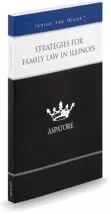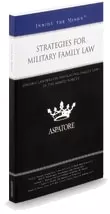Tax Treatment and Consequences of Divorce – Multi-State Divorce Lawyers
a. Taxation of Asset Transfers
26 USCA § 1041: Transfers of property between spouses or incident to divorce
(a) General rule. No gain or loss shall be recognized on a transfer of property from an individual to (or in trust for the benefit of) –
(1) a spouse, or
(2) a former spouse, but only if the transfer is incident to the divorce.
(b) Transfer treated as gift; transferee has transferor’s basis. In the case of any transfer of property described in subsection (a) –
(1) for purposes of this subtitle, the property shall be treated as acquired by the transferee by gift, and
(2) the basis of the transferee in the property shall be the adjusted basis of the transferor
(c) Incident to divorce. For purposes of subsection (a)(2), transfer of property is incident to the divorce if such transfer –
(1) occurs within one year after the date on which the marriage ceases, or
(2) is related to the cessation of the marriage.
(d) Special rule where spouse is nonresident alien. Subsection (a) shall not apply if the spouse (or former spouse) of the individual making the transfer is a nonresident alien.
(e) Transfers in trust where liability exceeds basis. Subsection (a) shall not apply to the transfer of property in trust to the extent that –
(1) the sum of the amount of the liabilities assumed, plus the amount of the liabilities to which the property is subject, exceeds
(2) the total of the adjusted basis of the property transferred. Proper adjustment shall be made under subsection (b) in the basis of the transferee in such property to take into account gain recognized by reason of the preceding sentence.
Keller v. Keller, 877 S.W.2d 192 (Mo. App. 1994): Trial court was required under the IRC to use as ex-wife’s basis upon sale of the former marital residence the original tax basis husband and wife had in the home, rather than ex-wife’s basis at the time of dissolution. Note: the court referenced § 1041 in saying that property exchanges incident to dissolution are nontaxable events to the parties, and parties must carryover the original basis in property exchanged and use such basis in computing capital gain or loss in the event of a sale.
b. Tax on the Sale of Real Estate
Internal Revenue Code (I.R.C.) § 1041, the “Magna Carta” of this area of the tax law, was a legislative response to a U.S. Supreme Court decision holding that the transfer of appreciated property in exchange for the release of marital rights resulted in the recognition of gain to the transferor. I.R.C. § 1041 provides that no gain or loss is recognized on a transfer of property from a spouse or a former spouse to a spouse or former spouse if the transfer is incident to a divorce. The transferee former spouse takes the transferor’s tax basis in the real property determined immediately before the gift, i.e., the tax basis is carried over for income tax purposes. This rule is applicable whether the fair market value of the real property transferred is less than, equal to, or greater than the transferor’s adjusted tax basis in the property prior to the transfer.
It is important to keep in mind that, pursuant to I.R.C. § 1041, potential tax consequences are also transferred when transferring real property between spouses. Because the tax basis is transferred from one spouse to the other spouse, built-in gain recognized by the transferee spouse upon the disposition of the property is also transferred.
I.R.C. § 1041 does not exempt all real property transfers between spouses or former spouses. Where liabilities on the property or to which the property is subject exceed the adjusted tax basis of the property, the property cannot be transferred between the spouses without tax consequences. The taxable gain recognized by the transferor spouse is the amount by which the liabilities exceed the tax basis in the real property transferred. The tax basis of the transferee is increased by the gain recognized by the transferor.
Retirement assets and the marital home are often the largest assets of the divorcing parties. Recent tax legislation substantially changes the tax treatment of gain realized on the sale of a principal residence. The new rules are effective for sales or exchanges occurring after May 6, 1997, and allow qualifying taxpayers to exclude from gross income gain up to $250,000, or $500,000 for qualifying joint filers. Gain realized on the sale or exchange of a principal residence can be excluded once every two years. The property needs to be a principal residence. An issue can arise when real property is used partly as a residence and partly for business, because both an ownership and use requirement exist. The house must have been owned and used as a principal residence for two of the last five years immediately preceding the sale or exchange. The use does not necessarily have to have been continuous.
For married taxpayers filing a joint return in the year of sale, either spouse can meet the ownership and use test. Special rules apply to parties who are separated or divorced. If the party selling has obtained ownership of the residence through a transaction qualifying under I.R.C. § 1041, the ownership period is aggregated. Additionally, if one of the spouses is granted use of the house under a decree of divorce or separate maintenance, the period of use by the non-owning party of the principal residence is imputed to the spouse who owns the property. If one of the spouses abandons the matrimonial home, the time period during which the other spouse occupies the residence prior to the execution of a divorce instrument will not be counted toward meeting the time period for using the residence as a matrimonial home by the spouse who abandoned the matrimonial home. Thus, care needs to be exercised in cases where one of the parties abandons the matrimonial home and the other party continues to live in the residence for a substantial period of time prior to formal divorce proceedings.
The amount of the standard exclusion is $250,000, but certain married taxpayers can exclude up to $500,000 if (1) the spouses file a joint return in the year of sale, (2) either spouse meets the ownership requirements, (3) both spouses meet the use requirements, and (4) neither spouse has sold another residence within the prior two years.
c. Taxation of Business Interests
If a partnership, LLC or corporation sells assets, the purchase price is paid to the entity. The entity may or may not distribute the sales proceeds to the shareholders, members or partners. But whether or not the money is distributed, the payment to the entity will have tax effects. To assess it, you’ll need to know the tax basis of the assets in the hands of the entity. The tax basis is the purchase price the company paid for the assets, less accumulated depreciation, plus certain adjustments.
Suppose the business entity sells its assets for $5 million. To determine taxes you need to know the business’ basis in these assets. If its basis is $2 million, there’s a $3 million gain. If its basis is $6 million, there’s a $1 million loss. Sometimes this kind of basis is known as “inside” basis, meaning the tax basis inside the entity. Depending on the type of business entity, this gain may be taxed to the entity or to the partners or members. For example, if a C corporation sells its assets for $5 million with a $2 million basis, that $3 million gain will be taxed to the corporation at up to 35%. That will leave only about $3,905,000 for distribution to shareholders.
If an LLC or partnership sold the assets for $5 million at a $3 million gain, there is no tax at the entity level. The full $5 million can pass through to the owners who pay their pro rata share of the $3 million gain. If you think C corporation treatment is better because the entity pays the tax, think again. After all, when shareholders of a C corporation receive distributions from the corporation, they, too, must pay tax at their individual rates. Of the $3,905,000 distributed to them, how much tax they pay depends on their basis in their shares and other variables. But they pay two levels of tax. The partners of a partnership or members of an LLC are better off because they only pay one level of tax, not two.
There is only one level of tax if the business owners sell their interests in a corporation, partnership or LLC. To determine whether there is gain or loss and how much, you’ll need to know the owner’s basis in the ownership interest. With an LLC or partnership, this is sometimes referred to as “inside basis,” to distinguish it from the “outside” basis that the entity has in its assets.
d. Avoiding the Imposition of the Recapture Rule
The recapture rule forces the alimony payer to report as income the alimony payments he previously deducted, which means the ex-spouse is entitled to reduce from income the alimony payments she previously received.
The rule applies when the payments decrease or terminate during the first three calendars years post-divorce and:
1.) The total payments made in the third year decrease by $15,000 or more from the payments made in the second year; or
2.) The payments made in the second year and the third year are substantially less than the payments made in the first year.
Front loading refers to paying a large amount of alimony in the first few years of a support obligation, maybe while the payer feels like they have the money and/or when children are minors and the payer wants to pay family support. The problem with front loading is if you reduce the payment substantially in the second year, you trigger recapture. If you do not, but then in the third year the payment is as little as $15,000 less than the second, you also trigger recapture. Instead, consider extending the front loaded payments over more than three years or transferring an asset or assuming a debt in lieu of front loading the payments altogether.
It is possible to skip the deductibility problem altogether by making payments under IRC 71, referred to as “section 71 payments.” Under this rule, spouses are entitled to make a series of payments to an ex without tax consequence. The downside is the payments are not tax deductible to the payer.
If a payer’s income is variable, and those variables are not within their control, state so in the divorce decree, and be prepared to provide proof to the IRS for an audit. In the divorce decree, consider stating why the income varies, what factors cause the income to vary, that both spouses understand that the income varies and why, and that an ex spouse will confirm the same to the IRS. This will keep an ex from disagreeing in an effort to deduct the alimony they previously reported as income in the future if faced with an audit.
Consider extending payments over more than three years, and be sure the amounts ordered to pay, and ideally do pay, do not decrease substantially from the first year to the second year and the third year or by more than $15,000 in the third year from the second year.
Rather than decease your payments over time, consider increasing them. This may make sense, for example, as an ex approaches retirement age, provided the payer is financially able to make the payments. Be cautious, however, of linking the increase to a loss of child support for children. The IRS can decide that “alimony” payments were actually child support because the amount paid changed when the child support obligation changed. If so, this will have to be reported “child support” as recaptured income, too.
e. Allocating Deductions
Generally, each former spouse can claim the itemized deductions he or she actually pays. And expenses paid from a joint account would be deductible in equal parts by each former spouse. But there are some special rules and the provisions of the divorce decree or legal separation agreement have to be taken into consideration.
Home mortgage interest is generally one of the most significant itemized deductions. For a home in the name of just one of the spouses, only that spouse could claim the deduction for home mortgage interest for the period they are married. If the home is jointly owned and the mortgage is paid from a joint account, the deduction for mortgage interest can be split equally between the spouses for the period of the marriage.
The deduction for home mortgage interest and real estate taxes for the post-divorce period of the year will be determined by the terms of the judgment or settlement agreement and the form of ownership following the divorce. If the home continues to be held in some form of joint ownership, either as tenants in common or joint tenancy, you and your spouse are both entitled to take deductions for half of the mortgage interest and real estate taxes. However, if the entire interest in the marital residence is transferred to one party as part of the settlement, only that person can take the mortgage interest deduction.
Depending on your income level, medical expenses may constitute another significant itemized deduction. According to the IRS, if medical expenses are paid from a joint checking account, each former spouse could claim half the expenses. Each former spouse could also deduct the medical expenses paid separately for him or her, for the other spouse, and for dependents. To include medical expenses paid for your spouse, you must have been married when the medical services were received or when the expenses were paid.
For other itemized deductions, such as charitable contributions, you would generally be able to claim the expenses you paid individually and half the expenses that were paid from a joint account while you were married.
f. Tax Questions
No matter your specific situation, a divorce lawyer at Stange Law Firm, PC can help guide you and/or get you to an appropriate tax professional. Contact us online or call at 855-805-0595.
John J. Weiler, Tax Consequences of Real Estate Transactions in Divorce, American Bar Association Solo, Small Firm, and General Practice Division Newsletter, Volume 18, Number 3, (April/May 2001), http://www.americanbar.org/newsletter/publications/gp_solo_magazine_home/gp_solo_magazine_index/weiler.html/.
Robert W. Wood, But Who Pays Tax On Business Sale?, Forbes – Taxes, (July 26, 2011), http://www.forbes.com/sites/robertwood/2011/07/26/but-who-pays-tax-on-business-sale/#6c1706c26795/.
Jennifer M Paine, What is the Alimony Recapture Rule?, Dads Divorce, http://dadsdivorce.com/articles/what-is-the-alimony-recapture-rule/.
Jennifer M. Paine, How to Avoid the Alimony Recapture Rule, Dads Divorce, http://dadsdivorce.com/articles/how-to-avoid-the-alimony-recapture-rule/.
Stout Risius Ross, The Taxing Side of Divorce: Taxes in the Year of Divorce, SRR Global Financial Advisory Services, (2012), http://www.srr.com/article/taxing-side-divorce-taxes-year-divorce/.





